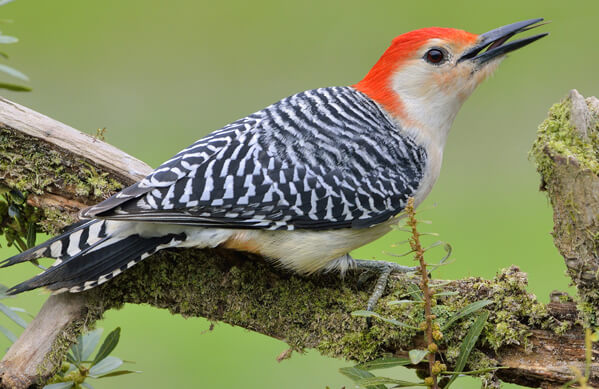Woodpeckers in Florida: Recognition Tips and Habitat Preferences
Woodpeckers in Florida: Recognition Tips and Habitat Preferences
Blog Article
Discover the Interesting World of Woodpeckers: Whatever You Required to Know
The globe of woodpeckers is a world filled with one-of-a-kind habits, complex adaptations, and a diverse array of species. From their environments and circulation patterns to their feeding habits and specialized physiological attributes, woodpeckers have long astounded the passion of ornithologists and nature fanatics alike. Understanding the details of these fascinating birds provides a glimpse into the complicated interplay in between their biology and the setting. As we discover the globe of woodpeckers further, we reveal a riches of information that drops light on their significance in communities and the difficulties they encounter in an ever-changing globe.
Woodpecker Habitats and Circulation
In North America, for instance, woodpeckers can be detected in both coniferous and deciduous forests, using their solid beaks to forage for pests and develop nesting tooth cavities in trees. In Africa, certain woodpecker varieties have adapted to dry settings, such as the acacia timberlands, where they play an important duty in controlling insect populaces.

Feeding Behaviors and Diet Regimen
Woodpeckers use their solid beaks to drill into the bark of trees, probing for pests and larvae concealed below the surface. In enhancement to bugs, woodpeckers likewise consume nuts, seeds, fruits, and sap.
Woodpeckers are recognized for their drumming behavior, which serves not only to connect with various other woodpeckers yet additionally to locate food. The fast drumming noise is produced by the bird pecking on powerful surface areas like dead trees or metal posts. This actions can draw in pests concealed in the wood, allowing the woodpecker to find their existence and feed upon them.
Unique Adaptations for Tree Climbing
In their proficient search of bugs concealed within tree bark, woodpeckers have actually advanced impressive anatomical attributes that equip them with unique adaptations for efficient tree climbing. Woodpeckers have strong neck muscle mass and an unique skull structure that absorb the influence of constant pecking, allowing them to climb up and down without triggering harm to their brains. These adaptations display the incredible evolutionary layout that allows woodpeckers to navigate trees with accuracy and performance.
Diverse Woodpecker Species Worldwide
With over 200 various types spread throughout numerous environments worldwide, the family members of Picidae encompasses an impressive diversity of woodpeckers. These birds can be discovered in forests, timberlands, savannas, and also metropolitan areas, showcasing their versatility to various settings. From the famous Northern Flicker in North America to the colorful and elusive Crimson-backed Flameback in Asia, each woodpecker varieties displays one-of-a-kind attributes in regards to quill, behavior, and environment choice.
Woodpeckers differ substantially in size, with the diminutive Downy Woodpecker determining around 6-7 inches in size, while the effective Lineated Woodpecker can click this rise to 17 inches - Woodpeckers in Florida. Their beaks also come in various forms and sizes, showing their feeding behaviors. Some species focus on drawing out bugs from tree bark, like the Acorn Woodpecker, while others, such as the Black-cheeked Woodpecker, feed upon fruits and seeds

Preservation Initiatives and Obstacles
Preservation campaigns for woodpecker populaces are essential in minimizing the impact of environment loss and other risks encountering these varied avian varieties. Woodpeckers face various obstacles to their survival, mainly as a result of logging, urbanization, environment change, and intrusive types. To deal with these problems, preservation efforts focus on securing and restoring woodpecker habitats, applying lasting forestry methods, and raising recognition about the relevance of these birds in communities.
One considerable difficulty in woodpecker conservation is the fragmentation of their habitats, leading to isolated populaces that are much more susceptible have a peek here to termination - Woodpeckers in Florida. Guardians work to produce wildlife passages and protected locations that attach these fragmented habitats, permitting woodpeckers to relocate in between various locations for feeding, reproducing, and sanctuary

Conclusion
In final thought, woodpeckers are remarkable birds with distinct adjustments for tree climbing and feeding behaviors. More research study and preservation actions are needed to make sure the survival of woodpeckers in the wild.
Report this page